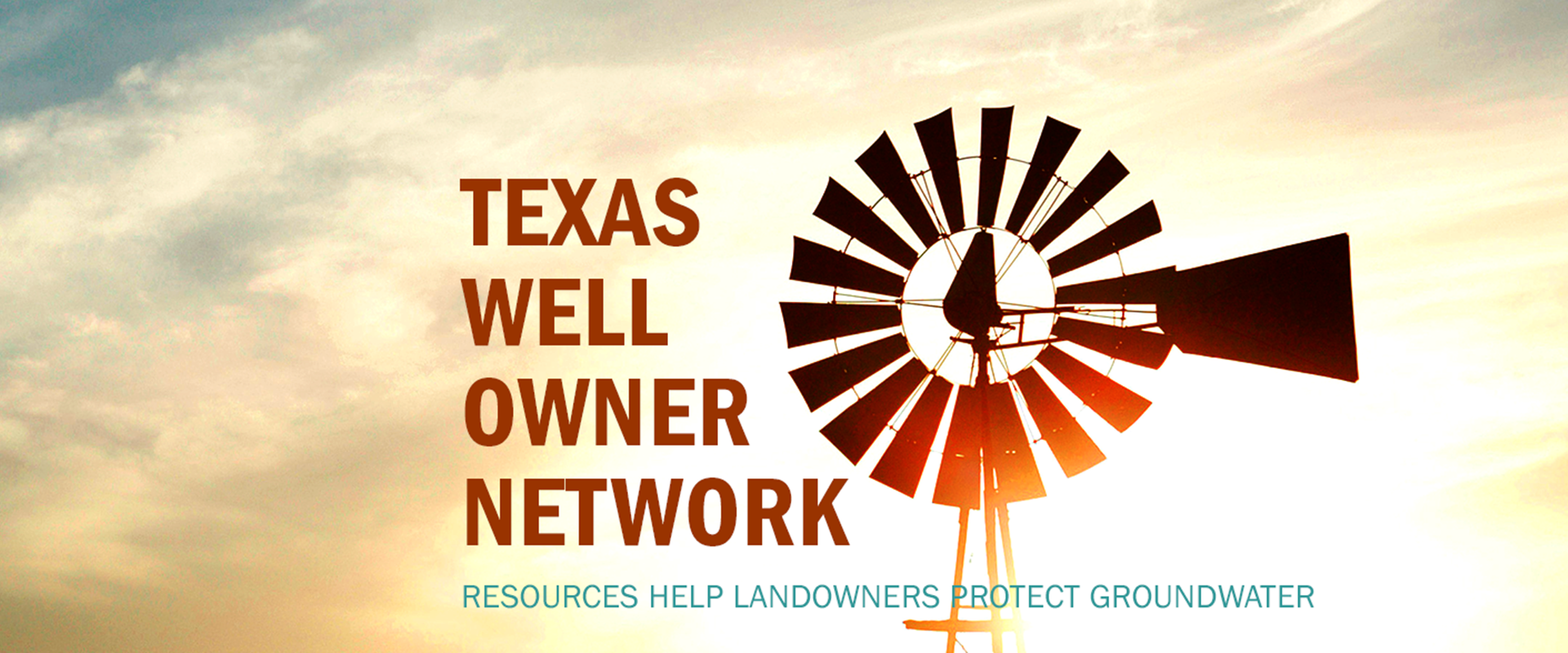In Texas, the management of domestic drinking water wells is the responsibility of the landowners, which can create questions about how to protect well water quality and quantity, as well as how to deal with drought and other issues.
The Texas Well Owners Network (TWON) provides landowners with answers.
“The TWON program is the groundwater quality education program for the state to help landowners learn more about their well water and the quality of their drinking water,” said Dr. Kevin Wagner, associate director of the Texas Water Resources Institute (TWRI). “I don’t know of any other groundwater education programs like this in the state.”
TWON, which is part of Texas A&M AgriLife Extension Service, Texas A&M AgriLife Research and TWRI and is funded by the Texas State Soil and Water Conservation Board, offers two programs for Texas residents who depend on household wells for their drinking water needs — “Well Informed” screenings and “Well Educated” trainings.
I don’t know of any other groundwater education programs like this in the state.Dr. Kevin Wagner
“‘Well Informed’ programs are free, one-hour educational sessions that give well owners the opportunity to have their well water screened for common contaminants, including fecal coliform bacteria, nitrates and high salinity,” said Dr. Diane Boellstorff, assistant professor and AgriLife Extension water resources specialist in Texas A&M University’s Department of Soil and Crop Sciences. “‘Well Educated’ trainings are free, one-day educational trainings for private well owners who want to become more familiar with Texas’ groundwater sources, septic system maintenance, water conservation, water quality, water treatment and well maintenance. Participants can also bring their well water samples to be screened for common contaminants.”
The program has held 44 “Well Informed” screenings and 14 “Well Educated” trainings since 2010, with more scheduled through 2016.
TWON participants also learn what actions to take to protect their well water, she said.
“By six months following the program, most of those needing to had pumped their septic systems, plugged deteriorated wells, removed hazards from their well house and moved contamination sources such as dog runs and livestock pens away from the well,” Boellstorff said. “Eighty-six percent planned to have their well water tested annually. On average, attendees valued their participation in the program at $834.
“Moreover, by protecting their own well water’s quality, participants are preventing contamination of aquifers, which can be extremely expensive to remediate.”
Numerous resources are also available online through the TWON website, to further help landowners answer well questions. Here is some basic information for well owners from some of the TWON resources.
Private Drinking Water Well Basics (ESC-13)
Where is your well?
Find and record the location of well(s) on your property. Maintain a file of all well records; each well will have a unique well identification number assigned by the driller for reporting.
Pinpoint potential sources of contamination
The wellhead should be at least:
- 50 feet from any septic tank, cistern, property boundary and/or nonpotable wells
- 100 feet from the septic drain field or any leach field
- 150 feet from any shelter or yard for livestock/pets, feed storage area or pesticide or fertilizer storage
- 250 feet from waste disposal systems
Test the water
Once a year, sample well water and test for E. coli or fecal coliform, nitrate and total dissolved solids. In addition, other contaminants such as arsenic and radionuclides are naturally occurring in parts of the state. Sample well water whenever contamination is suspected; if a change in color, taste or odor is noticed; after pump or well maintenance; or, if there is any change in health of those who drink the water.
To find a laboratory to test your water, call the local county health department or a Natural Environmental Laboratory Accreditation Program (NELAC) certified drinking water laboratory found online.
Well Owner Drought Response (SP-465)
During severe drought periods, groundwater resources are relied upon more heavily to provide water. Increased pumping plus the loss of recharge often results in lowered water table elevations. There are several recommended best management practices to protect the water supply.
- Monitor the pump.
- If pumping causes the sound of “sucking air,” shut down the pump and allow it to rest.
- Depending on overall well depth, lowering the pump may be an option.
- Plan to sample well water on a regular basis during drought; as the water table drops and pulls air (oxygen) into the aquifer, the chemistry of the water will change.
- Add a pumped water storage tank to provide needed water while allowing more time for the water level to recover, protecting the pump and supplying peak demand with a lower yield. Working with neighbors to schedule common or heavy water use may help.
- Practice water conservation to protect groundwater resources during drought.
Plugging Abandoned Water Wells (B-6238)
Many wells around homes, farms, industrial sites and urban areas have been abandoned without being properly plugged, creating a risk to humans, animals and the water supply.
An abandoned water well is a direct conduit from the surface to the aquifer below. Any surface contaminants can flow directly into the groundwater without natural filtration from soil. This puts the well, and other nearby wells, at risk.
According to state law, a well is considered abandoned if it has not been used for six consecutive months. However, it can be considered in-use if its equipment is in good condition or if it has been capped.
Moreover, by protecting their own well water’s quality, participants are preventing contamination of aquifers, which can be extremely expensive to remediate.Dr. Diane Boellstorff
The landowner is legally responsible for plugging abandoned water wells and is liable for any water contamination or injury that results from an unplugged well. Before beginning the process of plugging an abandoned water well, seek advice from the local groundwater conservation district, a licensed water well driller and/or pump installer, or the Texas Department of Licensing and Regulation well driller/pump installer/abandoned well program.



